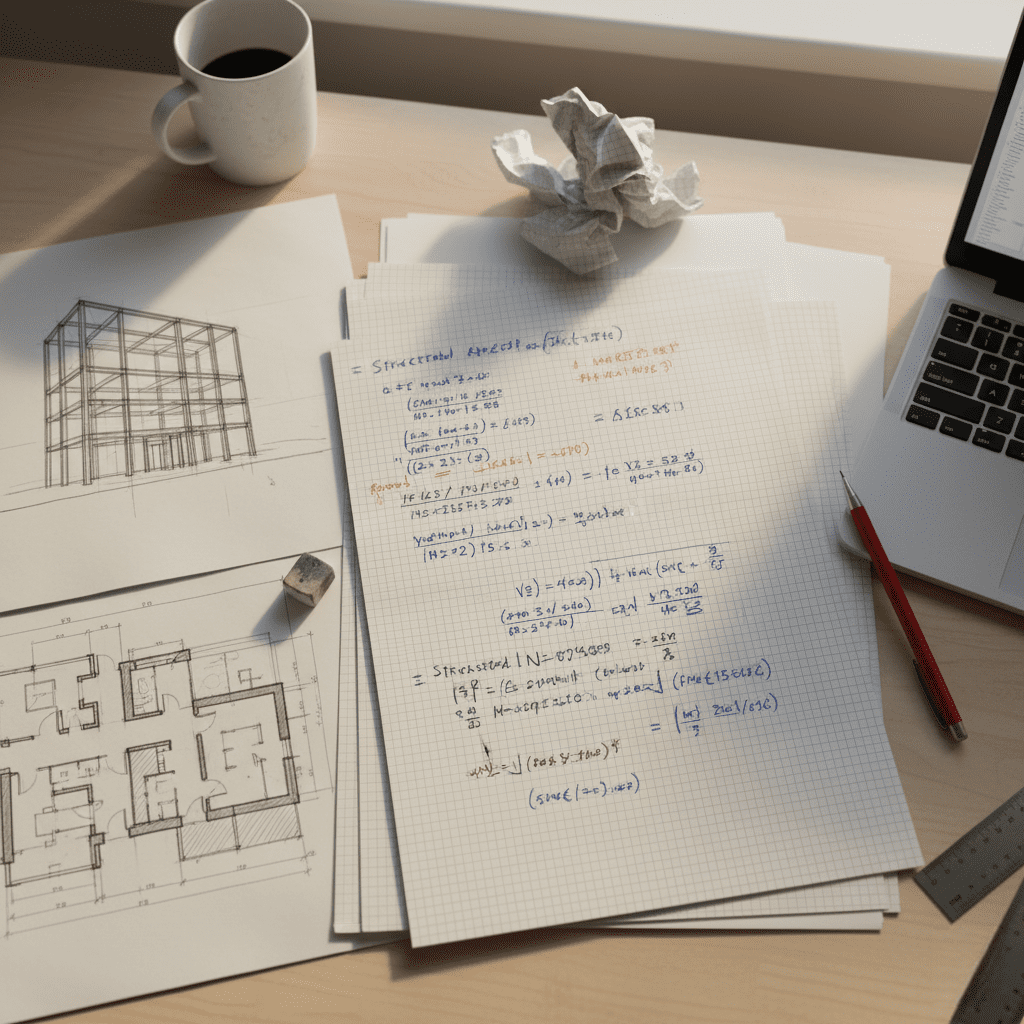
Cost To Remove A Load Bearing Wall In The UK (2026 Engineer Guide)
Removing a load bearing wall is one of the simplest ways to open up a home, but the cost varies because every house carries weight differently. As structural engineers, we see real UK prices every day, so this guide gives you accurate, engineer-backed cost ranges rather than generic estimates.
Below is a clear, practical breakdown of everything involved.
Quick Answer: How Much Does It Cost To Remove A Load Bearing Wall?
The typical cost to remove a load bearing wall in the UK is £1,800–£7,500, depending on the size of the opening and the beam required.
Summary Cost Table
| Opening Size | Typical Total Cost | What It Includes |
|---|---|---|
| Small (1–2m) | £1,800–£2,800 | RSJ, labour, making good |
| Medium (2–3m) | £2,800–£4,200 | Stronger beam, labour, making good |
| Large (4–5m) | £4,200–£7,500 | Heavy beam, goalpost/box frame possible |
These ranges reflect current 2026 steel prices, real UK labour rates, and actual engineering requirements, not sales-driven averages.
What Is A Load Bearing Wall?
A load bearing wall is a wall that carries weight from above. That weight may come from:
- Floors
- Roof structure
- Internal beams
- Joists
- Masonry above
Removing the wall without proper support can lead to:
- Sagging floors
- Cracking walls
- Doors sticking
- Uneven ceilings
- Long-term structural problems
You cannot guess whether a wall is load bearing. The direction of joists, the span of floors, and hidden beams all influence load paths.
Simple Signs A Wall May Be Load Bearing
- Joists sit on top of it
- It lines up with a wall above
- It’s perpendicular to floor joists
- It’s part of the original layout
- It sits under a roof beam
None of these are guarantees. Always confirm with a structural engineer.
Full Breakdown Of Costs (Engineer Analysis)
Each part of the job has its own cost. Below is the breakdown we use when explaining work to clients.
Structural Engineer Costs
Structural design and calculations are required for Building Control.
Typical 2026 fees:
- £220–£380 for simple openings (1–2m)
- £380–£650 for large openings (3–5m)
- £120–£180 for padstone design
- £90–£160 for splice detail
- £250–£400 for a site visit (only when needed)
Calculations include: beam sizing, bearing checks, load assessment, padstone design, connection details, structural notes, and a Building Control-ready pack.
RSJ / Steel Beam Costs (2026 Pricing)
Steel prices fluctuate, but most domestic beams fall into these ranges:
Supply only:
- £180–£260 per metre for standard beams
- £260–£380 per metre for heavier beams
- £400–£650 per metre for very heavy sections
Supply + installation:
- £900–£1,300 (up to 3m span)
- £1,400–£2,400 (3–5m span)
- £2,500–£4,500 for goalpost or box frame arrangements
Goalposts are common when you remove almost the whole rear wall.
Builder & Labour Costs
Labour is usually the largest part of the project.
- £900–£1,400 small opening
- £1,400–£2,200 medium opening
- £2,200–£3,800 large opening
Costs rise when floors/ceilings need levelling, services need shifting, access is poor, or heavy steels require lifting equipment.
Additional Costs
- Building Control: £240–£420 depending on region
- Waste removal: £180–£260
- Radiator or socket/switch relocation: £120–£280 per item
- Floor/ceiling levelling: £30–£40 per m²
- Completion certificate: Normally included in the Building Control process.
Real UK Cost Examples (Engineer Case Studies)
These examples come from real structural engineering jobs across the UK. Values are rounded for clarity.
Example 1: Kitchen To Dining Room (2.4m Opening)
Total cost: £2,550–£3,400
- Beam: £1,100
- Labour: £1,300
- Calculations: £300
- Making good: £250–£400
This is the most common scenario. The job takes 2–3 days.
Example 2: Lounge Wall (3.2m Opening)
Total cost: £3,200–£4,600
- Beam (254UB): £750
- Labour: £1,800
- Calculations: £420
- BC: £320
- Making good: £350–£600
Loads are often higher in lounge walls because floors usually span onto these walls.
Example 3: Large Rear Wall (4.6m Opening, Box Frame)
Total cost: £6,000–£8,500
- Steel frame: £3,200–£4,000
- Labour: £2,000–£3,000
- Calculations: £600–£750
- BC: £350
This is typical in kitchen extensions and open-plan kitchen/diner conversions.
Do You Need A Structural Engineer? (Yes.)
The beam cannot be guessed. We check:
- Floor load paths
- Roof geometry
- Supporting walls
- Joist spans
- Point loads
- Padstone requirements
- Stability
A structural engineer designs the beam so the building continues to behave properly. Building Control will not sign off the work without calculations.
Do You Need Building Control Approval?
Yes. Removing a load bearing wall is structural work. Building Control checks:
- Beam design
- Padstones
- Bearing length
- Fire safety
- Insulation continuity
- Workmanship
You’ll need structural calculations, drawings or sketches, photos of steel installation, and a completion certificate. Without approval, you may have issues when selling.
What Type Of Beam Do You Need?
Different beams suit different spans.
Standard RSJ (UB Beam)
Most common choice. Good strength-to-weight ratio.
Goalpost Frame
Used when a large portion of the wall is removed. Two columns + one beam.
Box Frame
Used for very wide openings or when side bearings are weak.
Risks Of Removing A Load Bearing Wall Without Proper Design
You risk:
- Sagging floors
- Cracked plaster
- Bounce or deflection
- Beam failure
- Fire regulation breaches
- Building control rejection
- Difficulty selling the property
This is why calculations exist.
How Long Does It Take?
Typical timeline:
- Day 1: Preparation, propping, electrics
- Day 2: Beam install
- Day 3: Demolition + making good
Total: 2–3 days (Add 1–2 days if plumbing/electrics need work).
Frequently Asked Questions
How Do I Know If The Wall Is Load Bearing?
Check joist direction, alignment with walls above, and floor layout, but always get a structural engineer to confirm.
Can A Builder Remove A Load Bearing Wall Without An Engineer?
No. The beam size cannot be guessed. Building Control requires calculations.
Do I Need Planning Permission?
No, unless the property is listed. You still need Building Control.
What Documents Are Needed?
Structural calculations, sketches, photos of the beam installation, and a completion certificate.
Can I Hide The Beam Inside The Ceiling?
Yes. This often requires more work and may need trimming of floor joists.
Conclusion
Removing a load bearing wall transforms a home, but the work must be done properly. The cost depends on the span, the loads above, and the type of beam. With correct calculations and Building Control approval, the process is straightforward and safe.
If you want accurate, fast calculations for your project, we can help.
Get Reliable, Building Control-Approved Beam Calculations
We provide calculations within 24–48 hours.
Call us: 07359 267907

